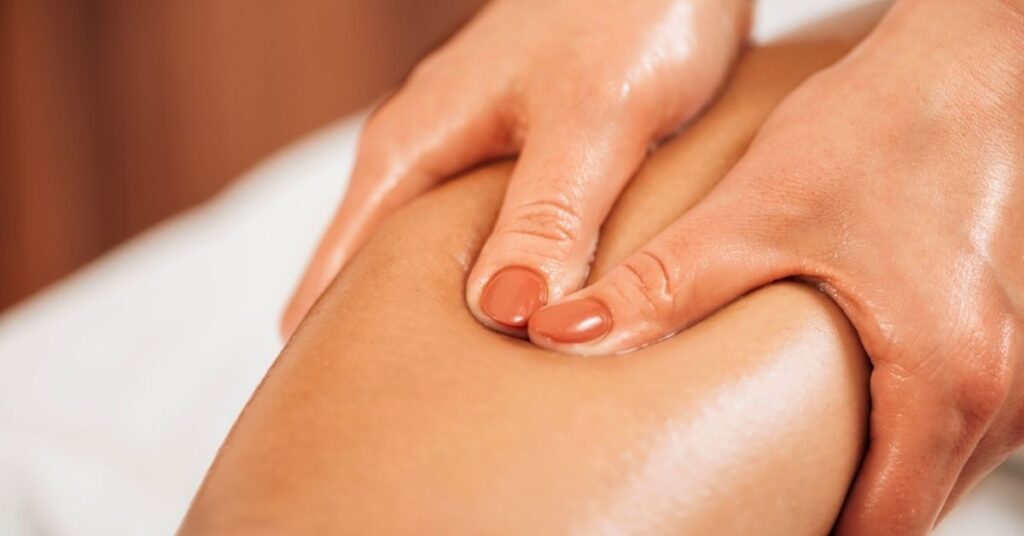Lymphedema is a chronic condition that causes swelling, usually in the arms or legs, due to a blockage in the lymphatic system. This blockage prevents lymph fluid from draining properly, leading to tissue buildup. While there is no cure for lymphedema, various treatments can help manage symptoms and improve quality of life. One such treatment is lymphatic drainage massage, a specialized technique designed to stimulate the flow of lymph fluid, thereby reducing swelling and promoting overall well-being. In this article, we will explore what lymphedema is, how lymphatic drainage massage works, and the benefits it offers to those suffering from this condition.
What is Lymphedema?
Lymphedema occurs when the lymphatic system becomes compromised, often following surgery, radiation therapy, or congenital conditions. The lymphatic system is responsible for removing waste products and excess fluids from the body, and when it doesn’t function properly, fluid accumulates, causing swelling in the affected area. Lymphedema can affect anyone, but it is most commonly seen in cancer survivors who have undergone treatments that affect the lymph nodes, such as breast cancer or melanoma treatments.
Causes of Lymphedema
Lymphedema can arise from several factors, including:
- Surgical removal of lymph nodes: This is common in cancer treatments, especially when lymph nodes need to be removed to stop the spread of cancer cells.
- Radiation therapy: Treatments like radiation can damage the lymphatic system, leading to reduced drainage of lymph fluid.
- Trauma or infection: Any injury that affects the lymphatic vessels can lead to the development of lymphedema.
- Congenital lymphedema: Some people are born with a malfunctioning lymphatic system that makes them more susceptible to swelling.
What is Lymphatic Drainage Massage?
Lymphatic drainage massage is a gentle and therapeutic massage technique designed to encourage the movement of lymphatic fluid around the body. It helps stimulate the lymphatic system to function more effectively, reducing swelling and promoting faster recovery. Unlike traditional massage, which focuses on muscle relaxation, lymphatic drainage massage targets the lymph nodes and vessels, using light, rhythmic movements to encourage lymph flow.
How Does Lymphatic Drainage Massage Work?
The massage involves a series of gentle, circular motions applied to specific areas of the body, particularly around lymph nodes in the neck, armpits, and groin. The purpose is to stimulate the lymphatic vessels, encouraging them to transport excess fluid away from the tissues and into areas where it can be drained out of the body. It’s important to note that lymphatic drainage massage should be performed by a trained therapist who understands the intricacies of the lymphatic system.
Techniques Used in Lymphatic Drainage Massage
The therapist uses light pressure and specialized strokes to direct lymph flow during a session. Some common techniques include:
- Stationary circles: Small, gentle circles applied to the lymph nodes to encourage fluid movement.
- Pumping motions: Light, rhythmic pressure used to help the fluid move along the lymphatic pathways.
- Stretching: Gentle skin stretching toward lymphatic flow to improve fluid Circulation.
These techniques work together to encourage the body’s natural ability to move lymph and reduce swelling.
Benefits of Lymphatic Drainage Massage for Lymphedema Patients
Lymphedema patients often struggle with the discomfort and limitations caused by swelling. Lymphatic drainage massage can benefit those suffering from this condition, improving physical and emotional well-being.
1. Reduces Swelling and Fluid Retention
The primary benefit of lymphatic drainage massage for lymphedema patients is its ability to reduce swelling. By promoting the flow of lymph fluid, the massage helps prevent fluid buildup in the affected areas, thereby alleviating pressure and discomfort. This can significantly reduce the volume of swelling and help patients regain mobility.
2. Improves Circulation
Lymphatic drainage massage can enhance Circulation in the affected areas, improving blood flow and oxygen delivery to tissues. Better Circulation helps the body’s cells receive the nutrients they need to heal, which is especially important for patients with lymphedema, who often experience slow tissue repair due to reduced fluid flow.
3. Supports Detoxification
The lymphatic system is responsible for filtering waste products from the body, and toxins can build up when it’s not functioning properly. Lymphatic drainage massage helps remove these toxins by stimulating the lymphatic vessels, promoting Detoxification, and encouraging the body to expel waste products more efficiently.
4. Eases Discomfort and Pain
Many lymphedema patients experience discomfort or pain from swelling and pressure on the surrounding tissues. Lymphatic drainage massage can provide relief by reducing the fluid volume in affected areas, which decreases pressure and eases pain. Additionally, the gentle, soothing nature of the massage can help calm the nervous system, providing an overall sense of relaxation.
5. Enhances Skin Health
Chronic swelling from lymphedema can cause the skin to become thick, hardened, and stretched. Lymphatic drainage massage can help maintain the skin’s elasticity by improving fluid movement and preventing further hardening. Regular massage can also prevent skin breakdown and reduce the risk of infections, common among lymphedema patients.
6. Promotes Healing Post-Surgery or Injury
Lymphatic drainage massage can aid in recovery for those who have undergone surgery or experienced trauma that affects the lymphatic system. It accelerates healing by reducing swelling, improving blood flow, and encouraging healthy tissue regeneration. This can be especially beneficial for cancer patients recovering from surgery or radiation.
When Should Lymphedema Patients Consider Lymphatic Drainage Massage?
While lymphatic drainage massage can significantly benefit many individuals, it’s important to understand when it is most appropriate. Lymphedema patients should consider incorporating lymphatic drainage massage into their treatment plan in the following situations:
1. Post-Surgery or Radiation
If you’ve had surgery or radiation therapy that affected the lymphatic system, lymphatic drainage massage can help speed up recovery and reduce the risk of developing lymphedema. Early intervention can prevent the condition from worsening and help you manage symptoms more effectively.
2. Chronic Lymphedema
Regular lymphatic drainage massage can provide ongoing relief and help control swelling for those with long-term lymphedema. Combined with other treatments such as compression garments and exercise, it can significantly improve the patient’s quality of life.
3. When Other Treatments Aren’t Enough
If you’ve tried other treatments, such as compression or exercise, and are still struggling with swelling, lymphatic drainage massage may be an effective complementary therapy. It can be used alongside other interventions to improve results.
4. As a Preventative Measure
Even if you don’t have full-blown lymphedema but are at risk due to surgery or trauma, lymphatic drainage massage can help prevent the condition from developing. It encourages proper fluid movement and supports healthy lymphatic function.
What to Expect During a Lymphatic Drainage Massage Session
If you’re considering lymphatic drainage massage, knowing what to expect during a session is helpful. The process is typically relaxing, and the therapist will use gentle techniques to work with your body’s natural rhythms. Here’s what you can expect:
Initial Consultation
Your first appointment will likely include an initial consultation, during which the therapist will assess your condition and discuss your medical history. This helps ensure that the massage is tailored to your specific needs.
Massage Technique
During the massage, the therapist will use light pressure to stimulate the lymphatic system. You may be asked to lie on a comfortable table, and the therapist will work in a series of sessions targeting specific areas of your body. Depending on the severity of your condition, the massage may last anywhere from 30 minutes to an hour.
Post-Massage Care
After the massage, you may be advised to drink plenty of water to support Detoxification. You may also be asked to wear compression garments or follow other recommendations to maintain the massage’s benefits.
Are There Any Risks or Side Effects?
Lymphatic drainage massage is generally considered safe, but there are some situations where it should be avoided or approached with caution. If you have an active infection, blood clots, or certain heart conditions, lymphatic drainage massage may not be appropriate. Always consult with your healthcare provider before starting any new therapy.
Conclusion
Lymphedema can be challenging to manage, but patients can significantly reduce swelling and improve their quality of life with the right treatments. Lymphatic drainage massage is vital in helping individuals manage lymphedema by promoting fluid movement, improving Circulation, and reducing discomfort. By incorporating this therapy into a comprehensive treatment plan, lymphedema patients can experience significant improvements in their symptoms and overall well-being.
FAQs
Q1: How often should lymphedema patients have lymphatic drainage massage?
- The frequency depends on the severity of the condition. Most patients benefit from weekly sessions, but this can vary based on individual needs and recommendations from their healthcare provider.
Q2: Is lymphatic drainage massage painful?
- No, lymphatic drainage massage is generally a gentle and soothing technique. It should not be painful, and any discomfort should be communicated to the therapist so that the pressure can be adjusted.
Q3: Can lymphatic drainage massage cure lymphedema?
- While lymphatic drainage massage can significantly improve symptoms, it does not cure lymphedema. It is a management tool that helps reduce swelling and discomfort.
Q4: Can anyone perform lymphatic drainage massage?
- No, a trained and certified therapist should perform lymphatic drainage massage. They know to apply the proper techniques and avoid causing harm.
Q5: Are there any side effects of lymphatic drainage massage?
- The massage is generally safe but should not be performed if there are infections, blood clots, or certain medical conditions. Always consult a doctor before starting any new therapy.





